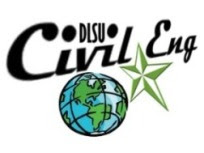 |
| At NU Disaster Mitigation Resaerch Center with Rodolfo Mendoza (DLSU faculty) and host, Prof. Hikaru Nakamura (right) |
Prof. Andres Winston Oreta of the Structural Eng'g Division of DLSU
Civil Engineering Department accomplished his Short-Term Research
Program in Japan (SRJP) through the suport of AUN/SEED-Net and JICA. The research entitled, "Survey of Earthquake Risk Mitigation &
Retrofitting Strategies for Concrete Structures for Local Adoption in the
Philippines" was conducted from June 3, 2015 to June 14, 2015 with Prof. Hikaru Nakamura of Nagoya University (NU) as host professor.
 |
| Exhibits at NU Disaster Mitigation Resarch Center |
Among the activities held during the SRJP were:
- Tour of the NU Concrete and Architectural Eng'g Research Lab
- Tour of the NU Disaster Mitigation Resarch Center (NU DMRC)
- Visit the Shimizu Institute of Technology at Tokyo
- Site Visit of Retrofitting of a Building using SMIC
- Nagoya Expressway Retrofitting Site Visit
- Tour of the Yahagi Corp. Research Center
- Meeting with Prof. Idota of Nagoya Institute of Technology on wood houses retrofitting
 |
| Nagoya Expressway site visit |
 |
| Yahagi Corp. Research Center. Sample retrofitting frame at the background. |
Prof. Oreta also presented a lecture at Nagoya University to 1st year Master's students in
their research course. He lectured on "Seismic Risk Assessment of
Structures" and "Introducing Sustainability Concepts in the Design of
Structures."
 |
| Lecture on Seismic Risk Assessment of Structures and Sustainability Concepts to NU graduate students |
The visit also gave Prof. Oreta the opportunity to reunite with his former supervisor, Prof. Tada-aki Tanabe of Nagoya University twenty years ago in a dinner with the NU Concrete Lab faculty.
 |
| Dinner with Prof. Tanabe and the NU Concrete Lab Faculty |
Lessons learned
The
short visit at Nagoya University produced a lot of information that will be
useful in the researcher’s teaching and research activities in the Philippines.
The survey of Japanese retrofit methods showed the various ways of increasing
the lateral performance of buildings and houses. Japanese technology is quite
advanced and sophisticated considering the availability of advanced research
facilities. Hence the retrofit methods can not be applied immediately in the
Philippines unless the Japanese company perform the retrofit in the Philippines
themselves. However, the Japanese retrofit methods can be localized in the
Philippines by using local materials and technology. Modeling and testing can
be done in the university. The survey will also be useful in the present
researches of the author on seismic risk assessment and retrofitting of school
buildings and heritage buildings. Research topics for the undergraduate and
graduate students can be derived from the information gathered in the short but
fruitful visit. The earthquake related educational models can also be
replicated in schools to serve as teaching aids.
 |
| Models on exhibit at NU DMRC |
 |
| Retrofitted buildings at Nagoya University |
|
|
|
Related Story: Mendoza accepted as PhD student at Nagoya University - Concrete Lab
Engr. Rodolfo Mendoza, DLSU CE part-time faculty joined Dr. Oreta from June 3 to June June 8, 2015 during the visit. Engr. Mendoza was accepted as a Doctoral student by Nagoya University Civil Engineering Department as a MEXT scholar starting October 2015. He joined Dr. Oreta to meet his supervisor and the faculty and staff of the NU Concrete Lab where he will be doing his research on Rigid Body Spring Modeling of Concrete Structures.
 |
| Engr. Mendoza presents his MSCE thesis to the NU Conrete Lab |
|
|
|
|
|
 |
| Meeting the Filipino scholars at NU |












.jpg)




